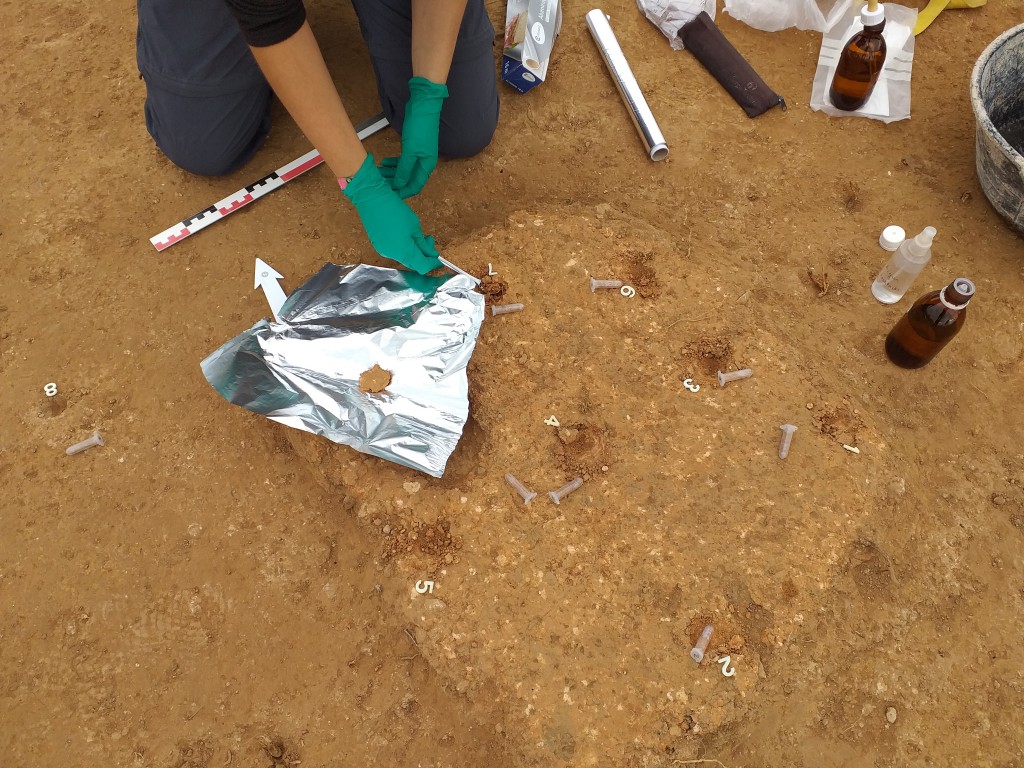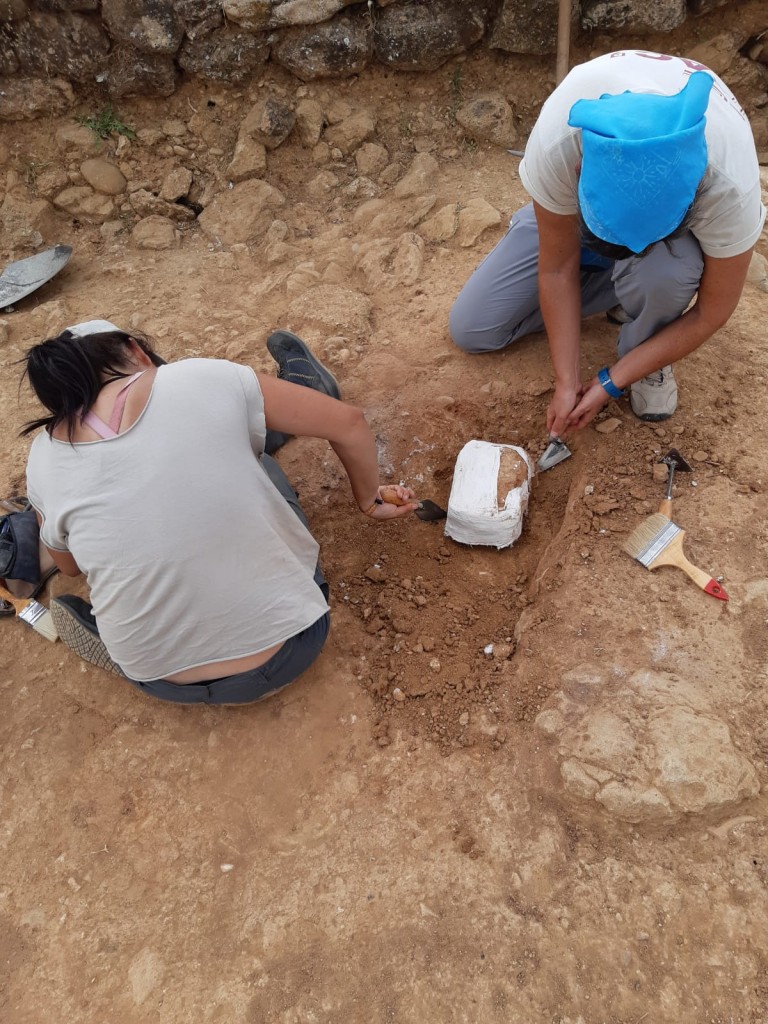
A new R&D research project proposes to deepen the knowledge of combustion structures in the northwestern Mediterranean during protohistory (first millennium BC).
Throughout the first millennium BC (and following a tradition that dates back to the Neolithic) hearths with similar characteristics are documented across the Mediterranean, from North Africa and the Iberian Peninsula to the Aegean. While there are different formal possibilities and techniques, there is an element always present: a clay plate as a combustion surface.
Throughout the first millennium BC the hearths had an element always present: a clay plate as a combustion surface.
These structures are classified, first of all, according to whether they are closed (ovens) or open (hearths), although the turn of the ovens is seldom preserved. Hearths, in turn, are divided into different groups according to the construction techniques that have led to the elaboration of classifications applicable to different geographical areas over long periods of time.
But, how can we interpret the everyday functions of hearths and fires? We cannot be guided only by morphological criteria. Thus, to specify the possible related activities (culinary, but also related to lighting, rituals, etc.), the association with noble materials or bioarchaeological remains is taken into account. Also, the location of structures and materials allows hypotheses to be made about whether, for example, they were private, collective or under the control of a sector of society. Therefore, it informs us about social organization.
Project Transdisciplinary and experimental study of combustion structures in the western Mediterranean during protohistory (1st milenium BC) (PID2019-104661GB-I00 / AEI) aims to increase data and information on daily activities such as food, as well as management of natural resources or rituals related to the hearths. All of this will contribute to improving knowledge about the organization of domestic groups.
Dr Maria Carme Belarte Franco (ICREA-ICAC) leads this project, which has a strong transdisciplinary approach and takes a research team with experts from different disciplines within de archaeology field. Besides researchers from the ICAC, specialists from other institutions such as the University of Barcelona, the CSIC, the Castellón Provincial Council, the Manacor History Museum or the CNRS, Centre National de la Recherche Scientifique (France) participate; and companies like Món Iber ROCS, SL. Also, the Iberian Citadel of Calafell, where the experimental part of the project will take place. Finally, there are participants from different research teams that excavate habitat sites from protohistoric times, mainly in Catalonia.
The application of an interdisciplinary methodology can allow a significant increase in knowledge about the daily life of protohistoric societies.
The starting project hypothesis is that the application of an interdisciplinary methodology can allow a significant increase in knowledge about the combustion structures of the period and study area and, consequently, about aspects of daily life, exploitation of the environment, rituals or technological level of the societies that built and used them. In the current state of research, it is possible to apply this methodology, still to be exploited in regard to sites from the first millennium BC in the western Mediterranean; and combining different specialities that, until now, either have not been applied or have been done in isolation.
Two methodological approaches
From a methodological point of view, the execution of the project has two approaches. The first one consists of collecting samples and conducting analysis on structures in the study area: spectroscopy analysis by FTIR, phytoliths, micromorphology and organic chemistry. In the case of documenting carbons, an anthracological study will be included. From the combination of results, it is expected to obtain information on temperatures reached, fuels or other substances in contact derived from their use (in particular, organic residues), etc.
The second approach consists of the experimental construction and commissioning of combustion structures according to the available archaeological information: replicas of the different types documented in protohistory will be made and their behaviour will be verified during the combustion processes. The temperatures reached in different types of structures and using different fuels will be measured to observe the transformations undergone during their use. Finally, samples of their surfaces will be ignited and subjected to the same analyzes.
The project foresees the experimental construction and commissioning of combustion structures, according to the available archaeological information. Replicas of the different types documented in protohistory will be made and their behaviour will be verified during the cooking processes.

Research in times of COVID-19
One of the weak points of the project was the need to be able to access, during the first year, to collect samples from a significant number of combustion structures, preferably with a certain chronological variety within the study period, and with a certain diversity in what regarding geographic location. In other words, the project was subject to the calendar of archaeological excavations in the collaborating sites in the project and, in addition, to the fact that combustion structures were documented where samples could be carried out.
The project was granted in June 2020, still in a state of alarm in Spain, and with the uncertainty of what archaeological excavations could be carried out. Despite the fact that some of the programmed interventions have ended up being suspended or carried out in a small format in order to comply with the necessary sanitary measures, between July and November it has been possible to obtain samples from the following archaeological sites, from north to south:
- La Monedière (Bessan, Aude, France)
- Mas Castellar de Pontós (Alt Empordà, Catalonia)
- Camp de les Lloses (Tona, Osona, Catalonia)
- Castellet de Banyoles (Tivissa, Ribera d’Ebre, Catalonia)
- Puig de la Misericòrdia (Vinaròs, Baix Maestrat, Valencia)
- Tossal de la Vila (Serra d’en Galceran, la Plana Alta, Valencia)
In addition, samples were already available from the Alorda Park (Calafell, Baix Penedès) and La Cella (Salou, Tarragonès) sites, collected in 2019, before the project concession. Finally, there are some deposits with structures already located and of which the sampling will be done during the 2021 excavation campaign.
We would like to thank the researchers responsible for the different sites for their interest in being part of the project, as well as the facilities offered to carry out the samplings.
Based on these first actions, a sample collection protocol is being developed to be sent to different research teams so that they can take it into account when documenting combustion structures in future interventions.
More information about the project, here






